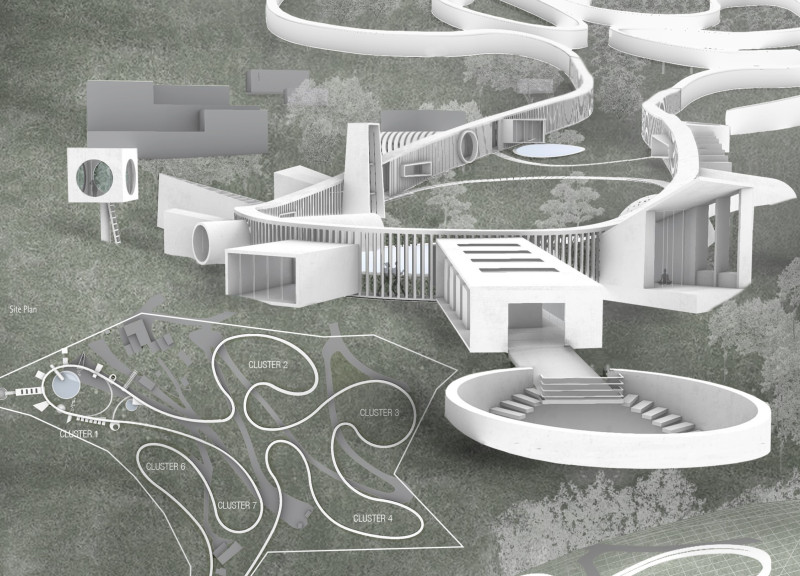5 key facts about this project
UNISON is located in the mountainous region of Val de Moses and aims to create a strong connection between people and nature. The spaces are designed to encourage meditation and reflection, focusing on how built environments can bridge inner experiences with the outer landscape. The main idea is to use architecture as a way to enhance interaction with both the natural world and community.
Pathway
The Pathway is a key feature of the design, acting as a winding route that guides users through the terrain. It consists of seven clusters, each containing several pavilions for meditation and therapeutic activities. This pathway not only allows visitors to explore but also encourages physical activity through walking and hiking. Important aspects of sustainability are included, such as solar panels and an irrigation system, which contribute to efficient energy and water management throughout the site.
Pavilions
The Pavilions are contemplative spaces carefully situated to highlight the scenic views of the area. Each pavilion is unique, focusing on engaging different human senses. For example, the light pavilion connects visitors with the sky and enhances their visual experience, while the earth pavilion allows for a tactile connection with the ground. This sensory engagement deepens the visitors' relationship with nature, making each experience personal and meaningful.
Integration and Flow
The design promotes a logical flow between the clusters and responds to the site’s geographical features. Each cluster of cabins accommodates a variety of activities, with moon gates marking transitions as visitors move from one area to another. This design not only guides people through the landscape but also encourages solitary reflection alongside communal experiences. The layout responds to the natural topography, enhancing how visitors interact with the environment.
Sustainability
While specific materials are not extensively described, the focus on sustainable practices suggests a commitment to ecological responsibility. The design incorporates approaches that aim to lessen the environmental impact and supports efficient use of resources. The selection of practices aligns with the goal of creating a harmony between human activities and the natural surroundings.
The experience culminates in spaces where individual contemplation is encouraged. Each pavilion serves as a frame for the surrounding views, drawing attention to the beauty of the landscape and enriching the interaction between visitors and nature.






















































